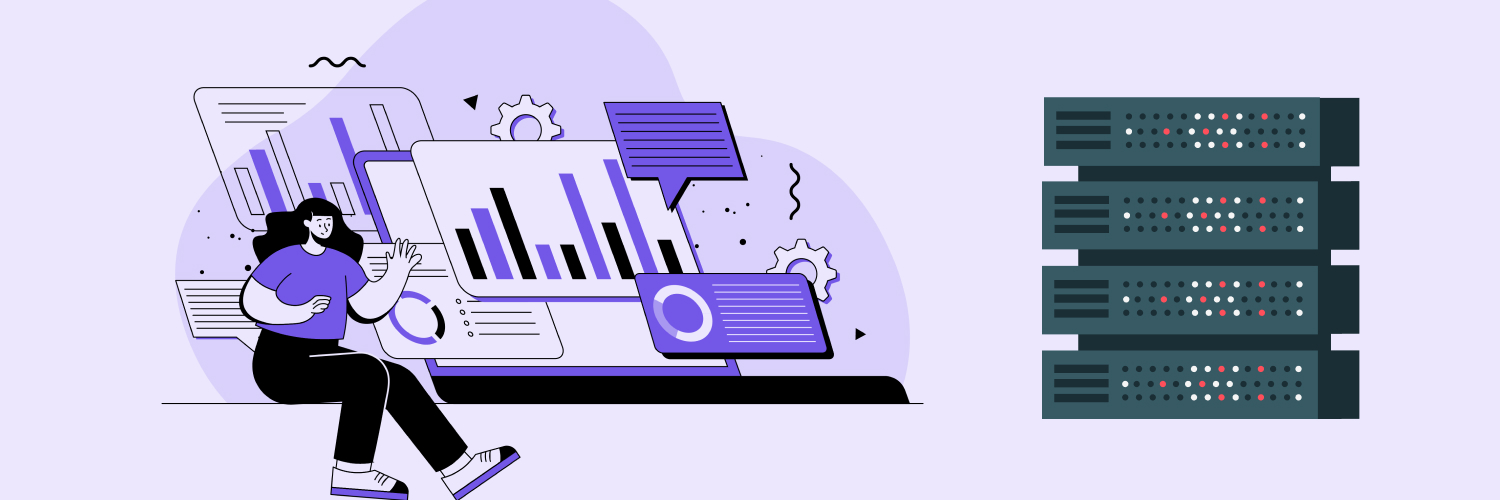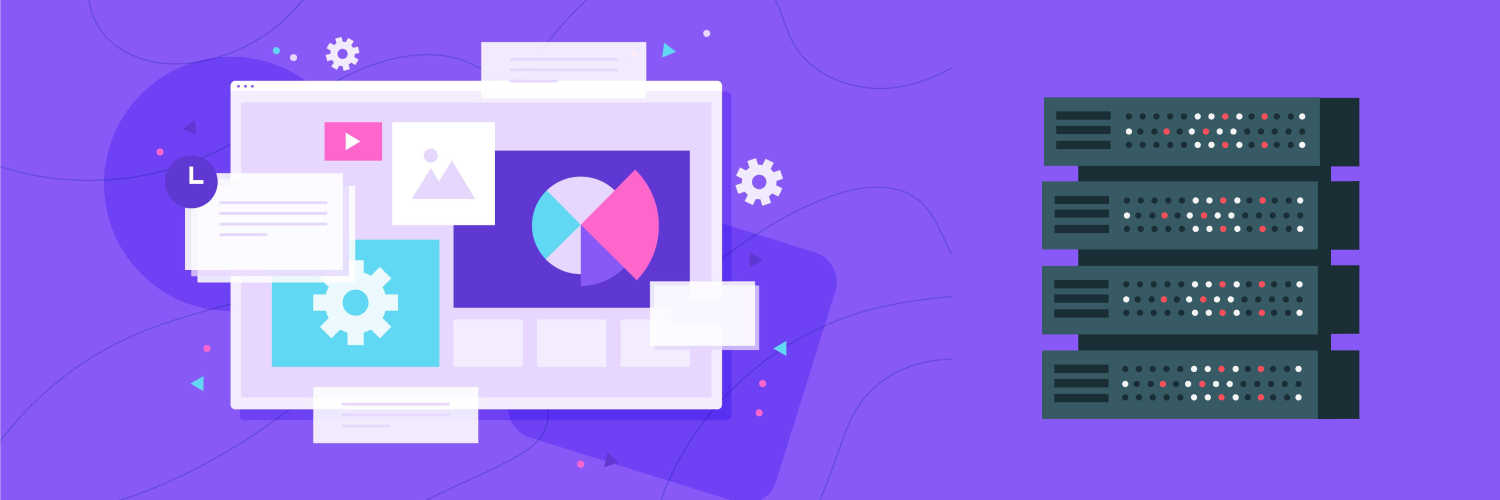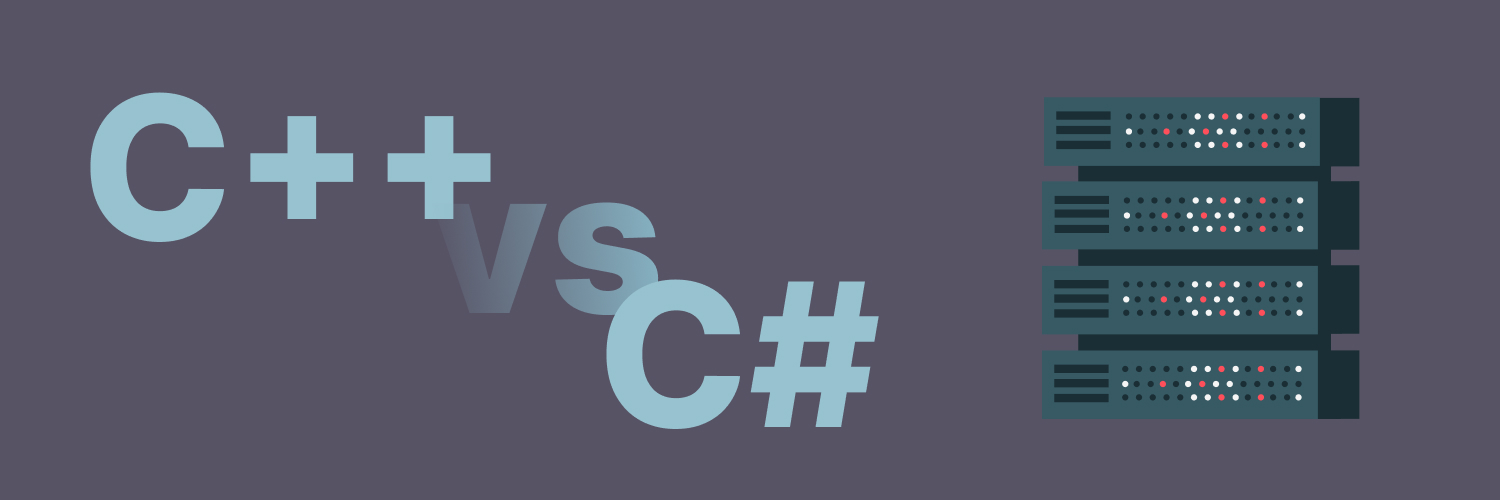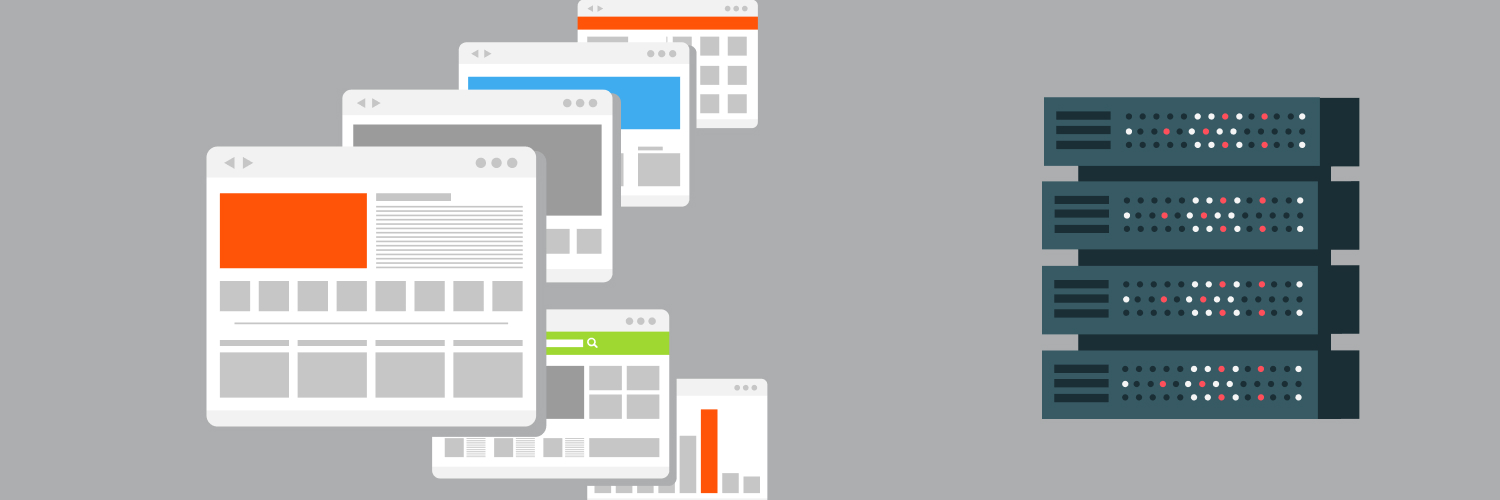Soft to Hard Data, What They Are (And Why Both Matter)
By now, you’ve probably had the importance of data, soft to hard, for your business drilled into you. Having good-quality, actionable data gives you insight into your competition, your own and potential buyers, and the broader business and geopolitical climate (which, of course, may in turn impact your business).
As more and more data becomes searchable every day, and reams of publicly-available data are produced in ever-increasing fashion (97 zettabytes this year, per Statista, with 181 zettabytes projected to be created by 2025), you’re really only limited by your imagination when it comes to how you can search data and put your findings to use.
But data can itself be categorized in different ways and comes in different varieties. Each of these has its uses for your business, but it’s helpful to know about the various strengths and weaknesses of data ranging from soft to hard. First, some definitions.
What is Hard Data?
Hard Data Definition
Hard comprises data that is factual, verifiable, and objectively measured.
Hard data may be measured via technological means, like the charges on your credit card or the number of steps you take every day as measured by your smartwatch.
Hard data is quantifiable, that is, easily expressed as a number or amount. If you were measuring literacy, hard data would involve tests (probably multiple-choice tests like SATs for easy comparability) so that you could see without any subjective interpretation how different schools and students compare. To cite a recent example, if you were measuring the spread of COVID-19 in different regions, hard data could involve analyzing samples to test the prevalence of the virus in wastewater. Another piece of related hard data (tracking the spread of the virus and the intensity of a variant’s effects) would be the number of ICU beds occupied by COVID-19 sufferers.
The internet age (along with smart devices) has yielded an abundance of hard data. If you’re thinking about what is hard data as it relates to the internet and internet-connected devices, consider the following:
- GPS and map programs that track their users’ movements
- Cell phone records and metadata (the data about the data, which does not include the content of a phone call, for example, but does include the time spent talking and to whom the call was made)
- The number of minutes spent by a program viewer on a streaming service, which can tell you precisely where viewers lose interest and help determine if a show is worth renewing or not
- Public transport e-ticket systems that provide accurate information on how commuters actually use public transport and which routes require more or less support
- Social media and other websites, which can track exactly how much time people spend on different features or articles, in turn, determining their direction for future features and additional sections, as well as alert readers and users to pieces they might find diverting (like the New York Times Top Ten Articles list).
- Biologists can track the number of animal populations worldwide via tagging programs to find out those in danger of extinction (or indeed where overpopulation is an issue).
- Stock prices are the ultimate in hard data to indicate whether a company enjoys investor confidence or not.
Our mostly cashless society, too, yields an abundance of hard data in terms of spending patterns courtesy of credit and debit cards, as do government records like tax returns.
In your everyday life as a consumer, you are constantly contributing to the mountain of hard data — with every click, every viewing decision you make, and every purchase you complete.
It makes sense that as a business owner you should use this rich trove of data, which tells us more and more about our world, every day.
The Advantages of Hard Data
The main advantage of hard data is that it is quantifiable. There’s always room for interpretation, of course (you could look at a stock price and be impressed by its apparent value, but of course, you would really want to look at broader trends in its value as well — more hard data). But you’re not relying on anyone’s self-reported information; rather it’s there in as close to black-and-white as you can get.
Hard data is used in your everyday digital life for services like geolocation (a satellite places your exact coordinates so that you can take a rideshare service), the optimization of web services (hard data informs the speed of your internet based on usage patterns), web sensors (hard data helps with facial or thumbprint recognition and security matters).
Hard data also impacts your life in myriad other ways. Think of nutrition and health surveys. Almost everyone, if they report their diet, will say that they eat a fairly balanced mix of foods, don’t drink too much alcohol, eat fiber, and so on. But this is likely dubious if you look at the hard data of what they eat (which you could, via a controlled nutrition study under close observation). Through no fault of their own, people are notoriously bad at judging what’s “healthy,” and may also leave out the indulgences they allow themselves. In contrast, hard data in the form of well-designed studies under controlled conditions would give you the complete, accurate picture of the value of a dietary change, supplement, or exercise in participants’ lives. These highly controlled conditions are the ones under which you would want medication and drugs tested, of course, rather than self-reported surveys (when it comes to more subjective conditions, like depression and anxiety, things can get a bit more complicated, but that’s why researchers find ways of quantifying mood or else use such hard data measures as neurological scans).
Hard data also allows for an accurate comparison, as in the above example of stock prices. While you could track public sentiment over time relating to a good or service (and that matters, too, as you’ll see below) most investors will want to see the value reflected in share prices and dividends and look at trends in numbers and prices over time.
Hard data doesn’t change depending on the way it’s collected (its pronunciation can change, some using a hard a vs soft a, but that doesn’t alter the data). Ticket sales, for example, are just there as a measure of a movie or play’s popularity. In contrast, soft data can change depending on how an interviewer phrases a question or a survey is conducted.
Further, hard data enthusiasts would argue, why waste time asking people how they feel about the subway (say) when you could just measure how many trips they take, how often trains are actually on time or overburdened, and which stops commuters tend to avoid.
Hard data is also easier to analyze. Once you collect it, it’s relatively easy to look at it all laid out on a spreadsheet or similar organizational tool and look for patterns or changes over time, and you can analyze such important factors as its velocity and variability, along with its sheer volume.
The Disadvantages of Hard Data
Hard data offers you raw numbers, trends, and information, and the hard research definition involves using quantifiable tools like mathematical models and controlled experiments. But life actually is not a mathematical model, and hard data doesn’t necessarily give you a much bigger or broader context. Suppose you’re running a tourism business and interest in one country has suddenly dropped. Is that because of political instability, unfavorable exchange rates, or something as whimsical as changing fashions or interests? Soft data might provide insight here.
In industries like film, which present many variables, there have been many attempts to rely on hard data over the years or algorithms which can successfully predict blockbuster success. The truth is, however, that these mostly fail, while surprise successes often sneak through.
This could have to do with the quality of the hard data being relied on (or simply the limits of hard data) or the way in which it’s interpreted. A film that looks great on paper could just feel lackluster in execution, could prove less appealing than the entertainment competition available that weekend (whether that’s another movie, a sporting event, or competition in the form of staying home and doing literally anything else), or fall victim to feeling behind the Zeitgeist when it’s finally released two or more years after being given the green light for production. (Not to mention an actor may fall out of favor in the long interim between greenlighting and release).
“Hard data” may be quantifiable, but also potentially irrelevant — for example, there are many celebrities with enormous numbers of social media followers. But these numbers may not translate into box office returns; just because someone finds a voyeuristic interest in a celebrity’s personal life doesn’t mean they will rush out to see them act.
So, hard data, while being verifiable, may also not be as relevant or applicable to your situation as it may seem at first blush. As this article in Psychology Today points out, hard data can also sometimes give the appearance of impartiality and importance while not really saying very much at all: “The many flaws associated with quantitative research also should be acknowledged. There are infinite ways to design a study and gather findings, each one likely to produce different results.”
Framing of data and intelligent analysis of it matter as much as the data itself. Still, if you are running a holiday rental site and you want to ensure your prices are competitive, hard data on what similar venues are doing will prove invaluable to your venture to make sure you’re not wildly overcharging or undercharging (or at least you know if you want to).
What is Soft Data?
Definition of Soft Data
Soft data is qualifiable information. It may take the form of answers to social media quizzes, polls, and other ways of gauging sentiment. It has more to do with feelings and feedback than hard numbers. Opinions, user comments, case studies, and testimonials are all forms of soft data.
If hard data is all about the “what,” soft data is about the “why.” What do people like about your product? What do they think could be improved? Would they recommend it to a friend? These are all common questions that come up in soft data.
While data scientists feel more comfortable in the world of hard facts, numbers, and charts, soft data matters, too, in really understanding if consumer sentiment is in favor of your product or not.
The Advantages of Soft Data
Soft data allows present and potential consumers to express themselves in ways that hard data does not. As mentioned before, soft data delves more deeply into the “why” informing decision making, which can in turn shape your marketing and production strategies. Consumers may not always be able to articulate exactly what’s on their mind, in which case you can guide them with polls and leading questions (although anyone who’s ever experienced a negative review online knows that consumers can get very passionate and articulate when it comes to expressing the reasons behind their dissatisfaction).
Soft data may sound less impressive than hard data, but think about how much word-of-mouth matters to you when you’re deciding whether or not to see a movie or make an online purchase. Chances are if several friends make a recommendation to you, you’ll be more amenable to something, and even (or especially) online reviews by strangers can make a difference when you’re choosing between two similar-sounding brands of vacuum cleaners. (Marketers know the value of soft data and testimonials, and use it to drive campaigns that look like user-generated content even if they are in fact highly designed and produced).
Many purchases and economic decisions are ultimately emotional, and the use of soft data can give you crucial insight into what people are feeling. It’s a mistake to assume as many early economists did that humans make perfectly rational decisions, and more sophisticated contemporary models consider the fact that people often make impulsive or emotionally-fuelled choices.
Sometimes, soft and hard data can overlap, as when you scrape data from the web relating to consumer sentiment. You can look at candid comments made online and chart via sentiment analysis whether consumers are feeling increasingly or decreasingly favorable toward your company. However, if you absolutely had to characterize this, it would probably remain in the “soft data” camp.
The Disadvantages of Soft Data
Soft data, its critics say, may be unreliable as a basis for a company’s strategy. For example, a focus group may love your product but (for whatever reason) may not be representative of the broader trends that hard data will more effectively illustrate for you.
To name a recent example of flawed soft data, polls around the US 2022 midterm elections (or at least a media narrative around them) suggested a “red wave” was coming and would result in massive Democrat losses. However, actual votes (hard data) proved otherwise. Soft data like exit polls worldwide have often been found to be less reliable than actual votes. The flaws of polling can be analyzed at length, and are often only visible in hindsight, but they might include:
- Poorly-designed questions
- Poorly-selected survey recipients (this is exacerbated if your online surveys are purely voluntary, in which case the only people who will elect to take it are people who like surveys)
- The potential of survey takers to give inaccurate, vague, or flat-out untruthful answers so as not to be caught giving the “wrong” answer on the record (contrary to their own secret ballot)
- Insufficient numbers of survey takers (too small sample size) to give you an accurate answer to your questions
Of course, even flawed polls (it could be argued) give you some actionable information. Even the faulty polls taken before the midterm elections may have encouraged Democratic candidates to shift streams in their messaging or motivated other voters to come out. In that sense, even an imperfect snapshot of sentiment can provide some useful information.
When it comes to online reviews, you’ve probably had the experience as a consumer of trying to make sense of wildly divergent and seemingly irreconcilable opinions or reviewers who seem hung up on trivial or pedantic concerns. Soft data, then, may not reflect the opinions of “average” diners or users, and it can be hard to generalize or extrapolate from this handful of noisy commenters. Still, if you get enough user reviews you might end up with an accurate picture of what customers are saying.
Hard Data vs Soft Data in Education
If you consider hard data vs soft data in education — a highly-charged topic for many — you might compare standardized test results of different schools. But many argue that standardized tests on their own don’t provide a full picture. They may be affected by racial or socioeconomic factors, which soft data like interviews and conversational findings can help ameliorate. Additionally, hard data like SAT scores may only tell you one aspect of a candidate’s aptitude; an admissions counselor will not have any insight into how intensively that candidate was coached or tutored. Soft data into a student’s background might include how they have interacted with their teachers and insights into their potential for growth and emotional capacity, the challenges they have overcome, and other issues relating to character and other insights and opinions teachers might provide into their students’ inner lives. (Indeed, most colleges include a larger collection of materials than merely hard data test scores when assessing students).
Balancing Hard Data vs Soft Data

As you might have guessed, all kinds of data — soft to hard — are critical for a business, each form complementing the other and working together to give you a rounded and comprehensive picture of the factors, micro and macro, that can affect your business.
Rather than thinking in terms of soft vs hard data, think about how you can put them both to work for your business. Big Data is only really useful when it considers the whole data picture, which covers a vast spectrum from soft to hard.
The beauty of web scraping all data, soft to hard, as leading data company Rayobyte recommends, is that the combination can give you the emotional insight advantage of soft data along with the Big Data bird’s eye view of seeing what people are saying and feeling about your product worldwide in a number of regions and demographic segments.
As a refresher, web scraping is the practice of combing through publicly-available data via an automated process to glean data-driven insights (from soft to hard) from the web.
You can, then, analyze the data to provide you with to-the-moment insights about how your product is doing and how it might fare better. It’s possible that just a handful of testimonials (for example) are not particularly reliable as a guide to how your business is doing. However, if you gather enough soft to hard data through the use of web scraping, for example, you can really give yourself a solid sense of what people are saying about you online.
Hard data gives you the big picture of numbers, trends, and quantifiable figures. Soft data fleshes out the qualifiable aspect of data, such as consumer sentiment and opinion, which can play an equal role in shaping your business’s strategic outlook. We are human, not robots, and it would probably be impossible to live in a world of hard data alone. In the end, it’s our insights, emotions, and opinions that make us human. If you were choosing a college, you might consider hard data like rankings (flawed as these may be) and average salary on graduation. But you would probably also want to listen to the opinions of current students and alumni along with your own intuition and sense of whether you would feel at home there. Similarly, admissions departments often try and conduct interviews to see how they feel (soft data) about an applicant and if their presence would enhance campus life. There are really very few decisions made, on a corporate or personal level, that involve hard data alone.
If you have a brand to promote, you would be remiss if you didn’t take note of the other forces driving consumer psychology and behavior and all data, soft to hard. Think of examples of large businesses like Starbucks that have expanded into foreign markets based on hard data, but have been humbled by not being fully aware of local customs, tastes, and more (the kind of soft data you would gather by listening closely to locals). Countries like Italy and Australia, in the Starbucks example, are fond of their own coffee cultures; so, they didn’t like having an interloper. A bit more good quality data on the soft to hard spectrum (and not just hard), might have changed Starbucks’s approach.
Similarly, large movies have been undone by suddenly seeming out of touch or tone-deaf to certain cultural groups’ sensitivities. These issues are surmountable through careful listening — or web scraping, with which you can find out what people are really saying online.
The good news is, a powerful and efficient web scraping system for data ranging from soft to hard is not out of reach for even smaller-sized businesses.
The best data and web scraping services, like Rayobyte working in sync with its partner service Rayobyte’s Web Scraping API, are able to comb through the publicly-available information of billions of global internet users to come back with data ranging from soft to hard which is actionable, relevant, and potentially eye-opening.
Web scraping is a remarkable technology. It allows you to look closely at all kinds of publicly available information, from soft to hard data, which includes:
- Soft data like social media and comment section remarks. This kind of scraped soft data can be better than polls, since you are able to hear what people really think about your brand, unprompted, and see how sentiment toward your brand is trending, for better or worse. It gives you actionable insights into how to make your brand more appealing
- Hard data like prices and special deals on offer from your competitors, which you can use to make sure yours are competitive, along with general market indicators and larger trends. If you’re running a small coffee shop, you should still know about global coffee bean pricing issues, which can directly inform your prices in the coming months. Forewarned is truly forearmed.
Web scraping allows you to:
- Collect large volumes of data, soft to hard (large enough to draw real, informed conclusions, and then act on them)
- Arrange your vast trove of soft to hard data into patterns and structured, analyzable form, whether you set out to discover patterns or gather data first and then look for patterns within it (both are legitimate ways of web scraping)
- Collect soft to hard data in real-time so that your conclusions are to-the-second and act like a true snapshot of the web. That’s important because things can change so quickly in the endless torrent of data that characterizes the internet.
You can then compare your findings over time to look at trends and bigger patterns of soft to hard data, as well as how the two interact (data coming out of the US Federal Reserve affects consumer confidence, but consumer confidence on such issues as inflation can also impact how the Fed behaves).
Scraping data, soft to hard, for analysis allows you to see the whole data big picture. If you operate a weekend getaway house and you’re wondering why your weekend rental isn’t popular (unless there’s an obvious reason why) scraping data from soft to hard could give you insight into what users were saying about your property and its location, and what they are saying about competitors’ offerings. It could also show you big-picture overall market and economic trends that could be impacting you equally (the cost of gas, inflation, a general downturn in disposable income in your area, and so on).
No matter the size of your enterprise or the industry you’re in, web scraping can help you grow your business. But to collect and sift through all this data, you need a partner who can help you:
- Find data, ranging from soft to hard, rapidly and reliably
- Acquire soft to hard data safely without compromising your privacy or security
- Acquire data without worrying about bandwidth
That means partnering with a data company like Rayobyte that can make acquiring data as hassle-free as possible. Rayobyte and its partner company Rayobyte’s Web Scraping API put web scraping and the powerful data it puts at your fingertips within reach for businesses of any size.
Why You Should Scrape Soft And Hard Data With Rayobyte

Rayobyte cares about ethics, reliability, affordability, and efficiency. For those reasons, it’s a market leader in web scraping and the use of proxies in finding all kinds of data, from soft to hard. But here are some more specific reasons why you should consider Rayobyte:
Rayobyte is Fast and Reliable
One of the biggest issues faced by companies looking to web scrape any data, soft to hard, is that sites often put up security blockers to repel the requests of bots. (While you could try web scraping on your own, it would be on more of an artisanal, hobby basis rather than as an effective strategic tool; for the sheer quantity of soft and hard data you need to gather and then analyze, you really need an automated web scraping tool that can trawl the world wide web).
That means if one of those sites you need information from thinks requests are coming from a bot, it can block your IP (internet protocol) address, meaning no more requests get through. That can cause delays in accessing information, even if you can make a request, again — and that delay can affect the accuracy of your information since you want to see everything as it exists in a nanosecond snapshot. A possible solution to this problem is the use of proxies.
Proxies are middlemen between your IP address and the target of your query. That means you can anonymize your request, and it’s not obvious to the targeted IP address that the requests are coming from you.
Proxies come in two kinds, residential and data center. Residential proxies (as their name implies) use domestic IP addresses to make proxy requests. These are harder to block since they are, after all, real homes’ IP addresses. But they can also be sourced unethically, with some unscrupulous proxy providers essentially squatting on people’s home IP addresses. Rest assured, Rayobyte only procures its residential proxies ethically, getting upfront consent from IP address owners and compensating them fairly for use of what is, after all, their asset. It also vets its users to make sure that no one is behaving badly while making use of Rayboyte’s resources, only using their proxies for the widely-practised, legitimate purpose of searching publicly available soft to hard data for business usage.
Some use data center proxies, the equivalent of call centers for data proxies, with thousands of IP addresses making constant requests. These can be cheaper than residential IP addresses and provide more firepower. They may provide adequate speed if you are a gamer, for example. But web scraping needs reliability as well as speed. Data center proxies may be easily detectable as bots — and hence more likely to be blocked.
Rayobyte uses rotating residential proxies to give you the fastest and most reliable proxy service possible. If a proxy is blocked, Rayobyte’s automated rotation means it can switch to a different one immediately.
Rayobyte’s automated tool, Proxy Pilot, can also detect intelligently if your proxy has been blocked or if it’s just encountering a technical difficulty and should just retry its request. This process is all automated and fast. It gives you the peace of mind you need to scrape data, soft to hard, so that you can spend your resources and time analyzing the data and trying to make sense of what it’s telling you.
Rayobyte is Secure
One major benefit of using proxies is that proxies anonymize your ̛IP address, making it all but impossible to know that information requests are coming from you.
Rayobyte even uses proxies in far-flung international locales so that there’s no obvious geographical pattern as to where your requests are coming from. If you need to retrieve information from different geographic locations, rotating residential proxies allow you to conceal your identity from both competitors and hackers alike. Rest assured, Rayobyte’s proxies are acquired with a view to keeping your data and IP addresses as secure as possible.
As a refresher, if someone has your IP address, that can make it easier for them to:
- Target you with personalized spam,
- Hack your devices,
- Carry out DoS/DDoS (denial of service) attacks, which can cripple your operation, and
- Turn you into law enforcement for copyright infringement or even commit crimes in your name.
Accessing the web via Rayobyte’s rotating proxies can add a layer to your own protection, by concealing your IP address from anyone who may be trying to access it, including people who may be trying to attack your business.
Rayobyte’s proxies also maintain the security of all your data, from soft to hard.
Shared proxies are a cheap alternative many businesses try, dividing their bandwidth between multiple users. Shared proxies, unfortunately, can not only be slow but also expose you to being blocked, sharing an IP address with bad actors, or may even be set up as data-phishing schemes. So, you have every reason to be cautious when it comes to sharing IP addresses with strangers, especially if they are not upfront about where these proxies come from.
In contrast, Rayobyte’s proxies are used only by users vetted by Rayobyte’s security team. They are geared toward preventing any data breaches and offer not only speed but security. In terms of security, residential proxies also offer a great way for companies to test the strength of their firewalls and may provide intensive DDoS protections through simulated bot attacks to prevent any data breaches. So, Rayobyte’s proxies could well become an important part of your firm’s security protocol (as well as its web scraping operations).
Rayobyte Offers Sufficient Bandwidth
Rayobyte knows that web scraping requires significant resources to access the volume of data you need to make a dent. Web scraping has to take place at a certain speed and velocity for it to be meaningful. That means:
- You should not settle for speeds less than 1 gbps.
- You need to ensure you have the most reliable uptimes with unlimited bandwidth, and you also need to be able to monitor your speeds to ensure they are not lagging or unreliable.
With that in mind, Rayobyte offers tools for automation that keep your web scraping moving at the most rapid pace possible. Rayobyte’s free, open-source, invaluable Proxy Pilot tool allows for intelligent, rapid analysis of such things as:
- Your success and failure rates in making requests of websites for information, which information you can use to refine your approach
- Whether you’re actually being blocked or just momentarily denied
- An audit of the sites you’re actually scraping for data to make sure you’re on the right track
- How much bandwidth you’re consuming so that you can stay on budget
- The response times of requests determine the quality of your information.
Proxy Pilot also handles appropriate cooldown times between using IP addresses to avoid getting blocked in the first place. Further, it supports geo-targeting. So, if you need to compare soft to hard data from two different territories (say, to see what your competitors are offering in France vs the UK) you can handle that with ease. Moreover, it’s all done to Rayobyte’s highest standards of ethics.
Rayobyte: The Solution for Data Scraping, Soft and Hard

If you’re a business looking to up your proxy game, Rayobyte offers a complete solution for you. It has a number of packages for every level of scraping ambition, and of course, provides the same level of security and privacy no matter which you choose.
Working together with Rayobyte’s Web Scraping API and Proxy PIlot, Rayobyte loves to provide businesses with the best proxy and web scraping packages on the market You could evaluate these with both hard and soft data, with the most reliable proxies, the most uptime, the fewest bans, and the best service. So, if you’re looking for a proxy provider that can help you get the data you need to make informed business decisions, get in touch with Rayobyte today and get a package that’s right for you!
The information contained within this article, including information posted by official staff, guest-submitted material, message board postings, or other third-party material is presented solely for the purposes of education and furtherance of the knowledge of the reader. All trademarks used in this publication are hereby acknowledged as the property of their respective owners.








